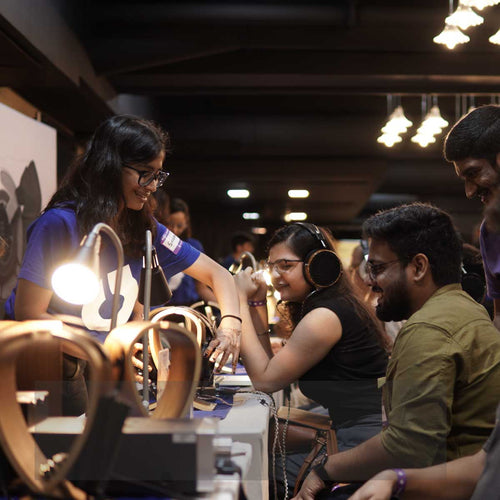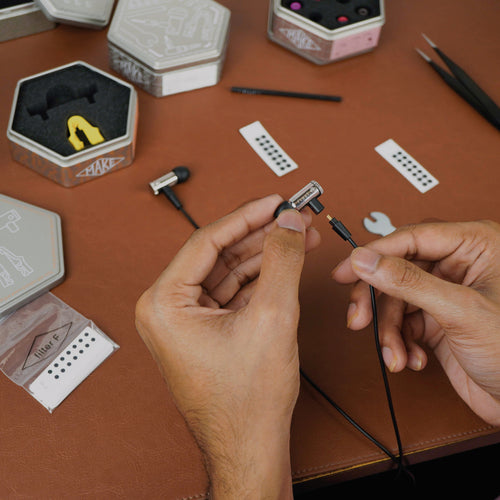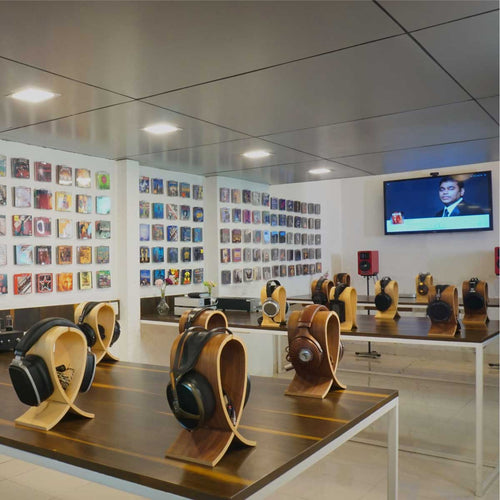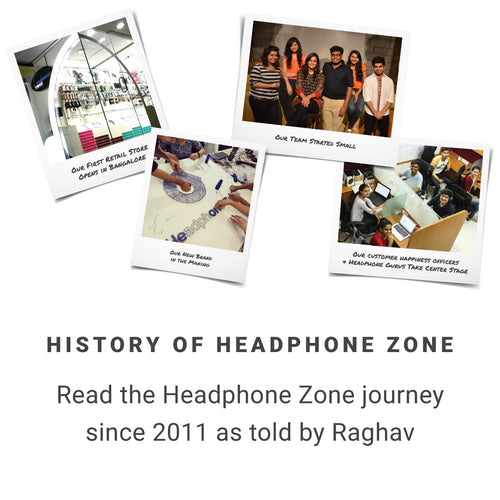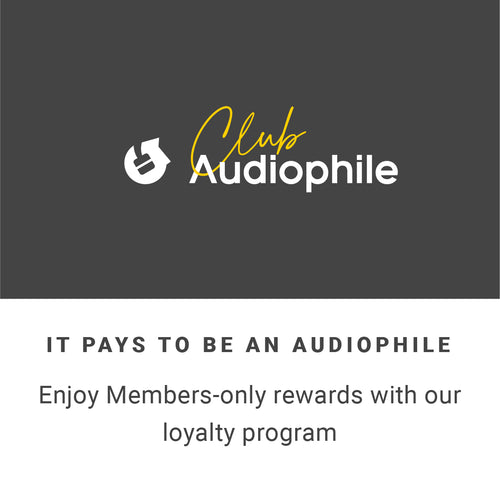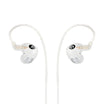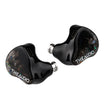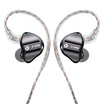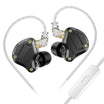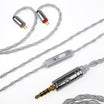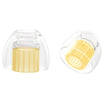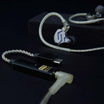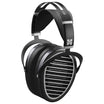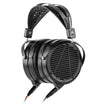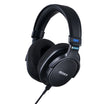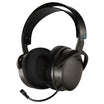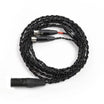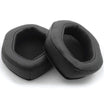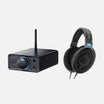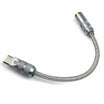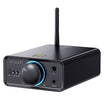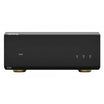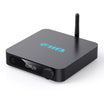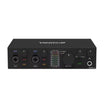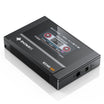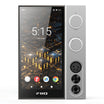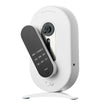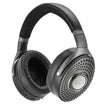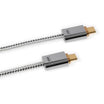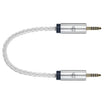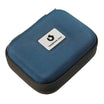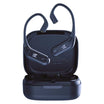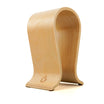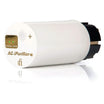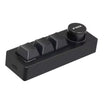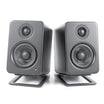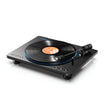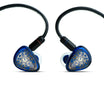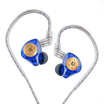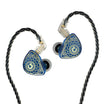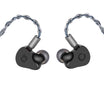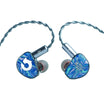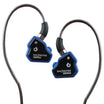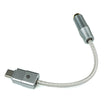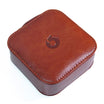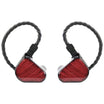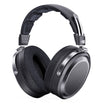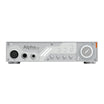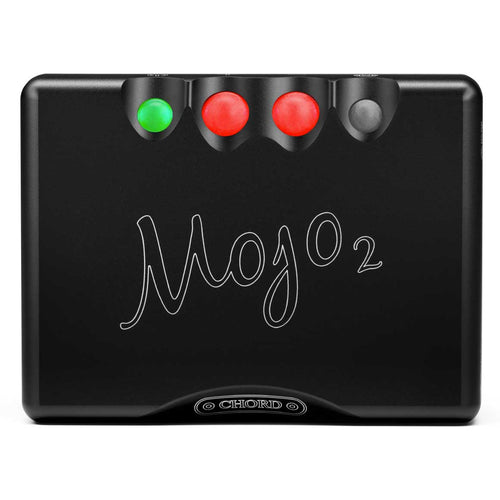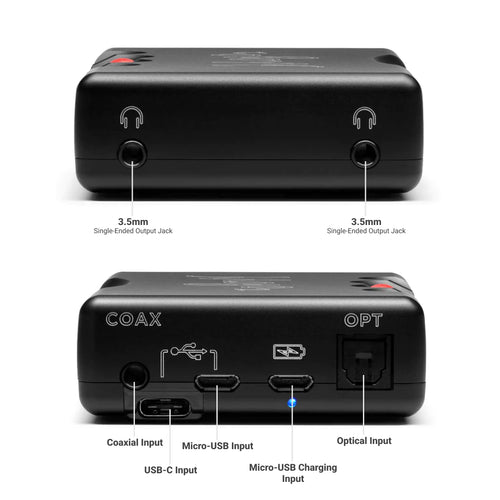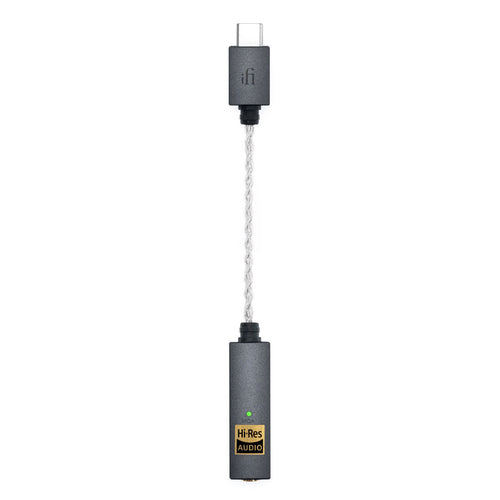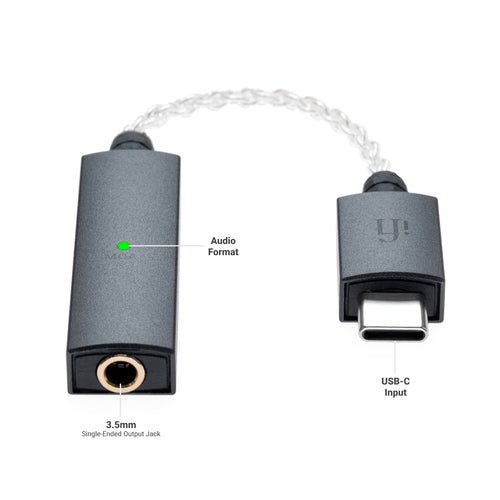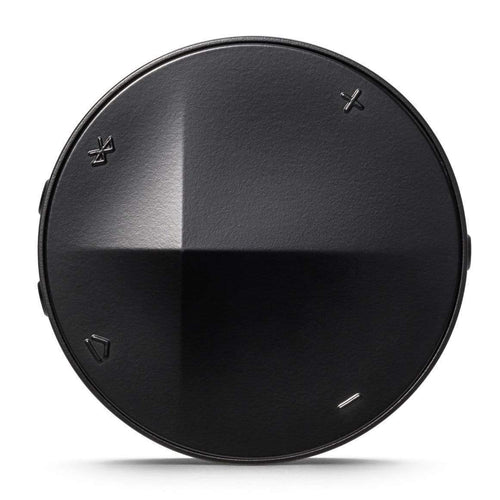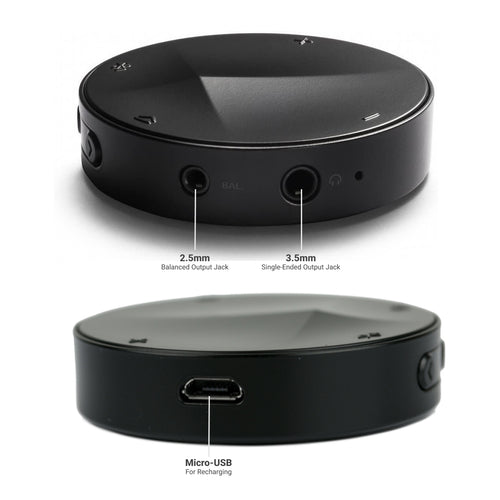Beginner's Guide
How to turn your Smartphone into a Hi-Res audio player
So in today's video, we're talking about a very very important subject, one that I think is relevant to almost everyone watching the headphone zones YouTube channel - which is how do you turn your smartphone into a Hi-Res audio player, allowing you to listen to music in high resolution here in India.
Featured in this Blog
-
I Am Worth It
For the most passionate audiophiles who demand nothing less than audio perfection 💎, these exceptional products represent the absolute pinnacle of sound reproduction technology. When I designate something in this category, it means we've identified something truly extraordinary - a piece of equipment that transcends conventional standards of excellence. Think of these as the Rolls-Royce of audio - masterpieces that don't simply meet expectations but establish entirely new benchmarks for what's possible.
These aren't just premium products; they're timeless investments in musical excellence whose value transcends ordinary performance metrics. Each represents a fundamental redefinition of what's achievable in sound reproduction, incorporating innovations and craftsmanship that justify their exclusive status.
When you see "👑 I Am Worth It" products, understand that you're experiencing audio perfection - these masterpieces cater to those who recognise that true excellence knows no compromise.
-
Serious Audiophiles Only
For those who have ventured deep into high-fidelity audio 🎯, the pursuit of sonic excellence becomes an endless journey of discovery and refinement. I believe that serious audiophiles demand equipment that can satisfy the most exacting standards and deliver performance that pushes boundaries. These products represent the pinnacle of acoustic engineering, incorporating advanced technologies and meticulous craftsmanship that enable them to reproduce music with utmost fidelity.
Each product has undergone rigorous evaluation to ensure it delivers exceptional performance that discerning listeners demand, from precise frequency response to impeccable detail retrieval and sophisticated sound staging. These devices incorporate premium components and engineering excellence that justify their position at the apex of audio performance.
When you encounter "🦈 Serious Audiophiles Only" products, expect uncompromising performance that satisfies the most demanding requirements and elevates critical listening to new heights.
-
Battery Life
In my experience, battery life is one of those things that separates a good day from a frustrating one. It's like having a fuel gauge you can rely on — longer battery life means less charging and more uninterrupted music. Whether you're on a flight or just commuting across town, this is one spec you don’t want to overlook 🔋.
Technically, battery life refers to the hours your device can play music on a single charge. Today’s headphones and DACs can range from 4 to 40+ hours, depending on things like Bluetooth codec, volume, and active features like ANC. More battery life also means better travel and portability, though it might come at the cost of size or weight.
When you see '⏳ Battery Life' products, expect: longer listening sessions, fewer charging breaks, and stress-free portability for music that goes the distance.
-
Works Great with Type-C
Don't have a 3.5mm headphone jack on your phone?
No need to worry 📞 - I believe these products represent the future of seamless audio connectivity. Think of Type-C as the universal language that all modern devices are learning to speak. It's like having a master key that works with your smartphone, laptop, tablet, and practically every new device you'll buy. These headphones connect directly to your Type-C port, delivering pristine digital audio without any dongles or adapters cluttering your setup.
The direct Type-C connection ensures both convenience and optimal audio performance, maintaining the integrity of your listening experience through a clean digital signal path. You'll enjoy plug-and-play functionality with universal compatibility, eliminating those frustrating moments of searching for the right adapter.
When you encounter "📱 Works Great with Type-C" products, expect seamless connectivity with modern devices and future-proof design that grows with your tech ecosystem.
-
DAC Chip
I like to say the DAC chip is the heart of any audio device — it’s the part that actually transforms digital files into music you can hear 🎧. Think of it like a chef decoding a recipe to create a delicious meal. The better the DAC chip, the more faithfully it translates your music. And in my experience, a great DAC can completely change how your headphones sound.
Now, here’s what’s actually happening: a Digital-to-Analog Converter (DAC) takes digital signals (your MP3s, FLACs, or streams) and converts them into an analog waveform your ears can enjoy. Different DAC chips — like those from ESS, AKM, or Cirrus Logic — offer their own sound signatures, levels of clarity, and noise performance. A good DAC ensures accurate timing, minimal distortion, and exceptional resolution.
When you see '⚙️ DAC Chip' products, expect: clean, detailed audio and better synergy with high-quality headphones — perfect for anyone upgrading from average sound to audiophile quality.
-
Power Output
I like to think of power output in audio gear like engine horsepower, it determines how much muscle your setup really has 💪. Whether you’re trying to drive a pair of power-hungry planar headphones or just want headroom for dynamic peaks, power output is the spec you want to check first.
Technically, it refers to the amount of electrical power (measured in mW or Watts) an amp or DAC/Amp combo can deliver to your headphones. More power means better control, improved dynamics, and the ability to handle demanding gear without distortion. But more isn’t always better, too much power with sensitive IEMs can introduce hiss or harshness.
When you see '🚀 Power Output' products, expect: strong driving capability, better dynamics, and optimal performance with headphones that need serious juice to shine.
-
Value for Money
I've found that the best gear isn’t always the most expensive. Some products punch well above their weight and deliver performance that rivals higher-priced alternatives. That’s what we mean with the "Value for Money" badge. It’s our way of telling you that you’re getting something special without breaking the bank. 🥜
These products are all about maximum returns for minimal investment. You’re not just saving money — you’re gaining an audio experience that exceeds expectations. Whether it’s build quality, tuning, or bundled accessories, these picks overdeliver.
When you see '🥜 Value for Money' products, expect impressive performance at an affordable price, making them a smart pick for budget-conscious buyers or first-time audiophiles.
-
Ideal for Beginners
Lost in the vast world of audio equipment?
Don't worry, we're here to guide you 🤝! I believe that everyone's audiophile journey should start with something approachable and welcoming. These carefully selected products serve as the perfect entry point into high-quality sound, specifically chosen to help you navigate through sometimes overwhelming technical options. Think of them as your friendly neighbourhood guide who knows exactly where to start without getting lost in complex specifications.
These products strike an ideal balance between quality and accessibility, featuring user-friendly designs and straightforward functionality. They're specifically selected as the perfect starting point for your audiophile journey, offering serious performance without intimidating complexity or premium pricing that might discourage exploration.
When you encounter "🌱 Ideal for Beginners" products, expect approachable excellence - these are your stepping stones into the world of premium audio, designed to grow with your developing appreciation for great sound.
-
Incredibly Popular
Some things deserve all the attention ⭐!
I've found that when something becomes incredibly popular in the audio world, it's usually for very good reasons. This exceptional audio gear has earned widespread popularity by consistently delivering outstanding performance that resonates with listeners across diverse preferences and experiences. Think of it like that blockbuster movie that everyone loves - sometimes, universal appeal indicates genuine quality rather than just marketing hype.
The widespread acclaim isn't just about trend or marketing - it's a testament to genuine quality and performance that has been consistently demonstrated through real-world usage. This popularity has been earned through merit, delivering reliable satisfaction to countless users 📈.
When you encounter "🥇 Incredibly Popular" products, expect proven excellence validated by the collective experience of satisfied users who've made these their go-to choice.
-
Works Great with Type-C
Don't have a 3.5mm headphone jack on your phone?
No need to worry 📞 - I believe these products represent the future of seamless audio connectivity. Think of Type-C as the universal language that all modern devices are learning to speak. It's like having a master key that works with your smartphone, laptop, tablet, and practically every new device you'll buy. These headphones connect directly to your Type-C port, delivering pristine digital audio without any dongles or adapters cluttering your setup.
The direct Type-C connection ensures both convenience and optimal audio performance, maintaining the integrity of your listening experience through a clean digital signal path. You'll enjoy plug-and-play functionality with universal compatibility, eliminating those frustrating moments of searching for the right adapter.
When you encounter "📱 Works Great with Type-C" products, expect seamless connectivity with modern devices and future-proof design that grows with your tech ecosystem.
-
DAC Chip
I like to say the DAC chip is the heart of any audio device — it’s the part that actually transforms digital files into music you can hear 🎧. Think of it like a chef decoding a recipe to create a delicious meal. The better the DAC chip, the more faithfully it translates your music. And in my experience, a great DAC can completely change how your headphones sound.
Now, here’s what’s actually happening: a Digital-to-Analog Converter (DAC) takes digital signals (your MP3s, FLACs, or streams) and converts them into an analog waveform your ears can enjoy. Different DAC chips — like those from ESS, AKM, or Cirrus Logic — offer their own sound signatures, levels of clarity, and noise performance. A good DAC ensures accurate timing, minimal distortion, and exceptional resolution.
When you see '⚙️ DAC Chip' products, expect: clean, detailed audio and better synergy with high-quality headphones — perfect for anyone upgrading from average sound to audiophile quality.
-
Power Output
I like to think of power output in audio gear like engine horsepower, it determines how much muscle your setup really has 💪. Whether you’re trying to drive a pair of power-hungry planar headphones or just want headroom for dynamic peaks, power output is the spec you want to check first.
Technically, it refers to the amount of electrical power (measured in mW or Watts) an amp or DAC/Amp combo can deliver to your headphones. More power means better control, improved dynamics, and the ability to handle demanding gear without distortion. But more isn’t always better, too much power with sensitive IEMs can introduce hiss or harshness.
When you see '🚀 Power Output' products, expect: strong driving capability, better dynamics, and optimal performance with headphones that need serious juice to shine.
-
Ideal for Beginners
Lost in the vast world of audio equipment?
Don't worry, we're here to guide you 🤝! I believe that everyone's audiophile journey should start with something approachable and welcoming. These carefully selected products serve as the perfect entry point into high-quality sound, specifically chosen to help you navigate through sometimes overwhelming technical options. Think of them as your friendly neighbourhood guide who knows exactly where to start without getting lost in complex specifications.
These products strike an ideal balance between quality and accessibility, featuring user-friendly designs and straightforward functionality. They're specifically selected as the perfect starting point for your audiophile journey, offering serious performance without intimidating complexity or premium pricing that might discourage exploration.
When you encounter "🌱 Ideal for Beginners" products, expect approachable excellence - these are your stepping stones into the world of premium audio, designed to grow with your developing appreciation for great sound.
-
Balanced Output
I often say balanced output is like using both hands to carry something heavy — it distributes power evenly and keeps things stable. In audio gear, balanced output helps reduce unwanted noise and interference, especially over longer cables. Think of it as a cleaner, more efficient way to transmit your music, ideal for anyone using high-end DACs, amps, or studio-grade headphones 🎧. You’ll typically find it on gear with XLR or 4.4mm connectors, and it's a must-have if you’re chasing that ultra-clean signal path.
Here’s what’s actually happening: a balanced output uses two separate signals, one inverted, so when interference is picked up along the cable, it gets cancelled out when the signals are recombined. The result? Cleaner audio, better dynamic range, and more power output — especially when paired with balanced headphones. The trade-off? You’ll need gear that supports balanced connections on both ends to really enjoy the benefits.
When you see '⚖️ Balanced Output' products, expect: ultra-low noise, more headroom, and better synergy with high-impedance headphones or sensitive IEMs — ideal for serious listening setups.
-
Use Wirelessly with Bluetooth
I tend to describe Bluetooth audio as wireless freedom with fewer strings attached — literally. When you see Use Wirelessly with Bluetooth, it means you can pair your headphones or IEMs with phones, laptops, or even TVs — all without reaching for a cable 🎶. It’s convenient, clutter-free, and great for everyday listening.
What’s happening behind the scenes is your gear is using Bluetooth codecs like SBC, AAC, LDAC, or aptX to compress and transmit your music wirelessly. Better codecs mean higher quality and lower latency. Of course, there’s a trade-off — Bluetooth won’t match the quality of wired gear, but today’s advancements have made the gap much smaller than before.
When you see '✂️ Use Wirelessly with Bluetooth' products, expect: tangle-free convenience and solid sound quality — great for commuting, workouts, or casual listening.
-
Battery Life
In my experience, battery life is one of those things that separates a good day from a frustrating one. It's like having a fuel gauge you can rely on — longer battery life means less charging and more uninterrupted music. Whether you're on a flight or just commuting across town, this is one spec you don’t want to overlook 🔋.
Technically, battery life refers to the hours your device can play music on a single charge. Today’s headphones and DACs can range from 4 to 40+ hours, depending on things like Bluetooth codec, volume, and active features like ANC. More battery life also means better travel and portability, though it might come at the cost of size or weight.
When you see '⏳ Battery Life' products, expect: longer listening sessions, fewer charging breaks, and stress-free portability for music that goes the distance.
-
DAC Chip
I like to say the DAC chip is the heart of any audio device — it’s the part that actually transforms digital files into music you can hear 🎧. Think of it like a chef decoding a recipe to create a delicious meal. The better the DAC chip, the more faithfully it translates your music. And in my experience, a great DAC can completely change how your headphones sound.
Now, here’s what’s actually happening: a Digital-to-Analog Converter (DAC) takes digital signals (your MP3s, FLACs, or streams) and converts them into an analog waveform your ears can enjoy. Different DAC chips — like those from ESS, AKM, or Cirrus Logic — offer their own sound signatures, levels of clarity, and noise performance. A good DAC ensures accurate timing, minimal distortion, and exceptional resolution.
When you see '⚙️ DAC Chip' products, expect: clean, detailed audio and better synergy with high-quality headphones — perfect for anyone upgrading from average sound to audiophile quality.
-
Power Output
I like to think of power output in audio gear like engine horsepower, it determines how much muscle your setup really has 💪. Whether you’re trying to drive a pair of power-hungry planar headphones or just want headroom for dynamic peaks, power output is the spec you want to check first.
Technically, it refers to the amount of electrical power (measured in mW or Watts) an amp or DAC/Amp combo can deliver to your headphones. More power means better control, improved dynamics, and the ability to handle demanding gear without distortion. But more isn’t always better, too much power with sensitive IEMs can introduce hiss or harshness.
When you see '🚀 Power Output' products, expect: strong driving capability, better dynamics, and optimal performance with headphones that need serious juice to shine.
Intro
Hi guys, this is Raghav here from Headphone Zone. So in today's video, we're talking about a very, very important subject—one that I think is relevant to almost everyone watching the Headphone Zone YouTube channel—which is: How do you turn your smartphone into a Hi-Res audio player, allowing you to listen to music in high resolution here in India?
Hi-Res Audio
All right, the first thing you should know about high-resolution music is: What is high-resolution music? It's a little hard to explain without getting technical, but listening to music in high resolution is the equivalent of watching a movie in 1080p or Full HD and 4K. Listening to music in low resolution is like going back to 144p or standard definition.
One of the easiest ways to explain it is that listening to music in high resolution or lossless is to be listening to music as intended by the artist—and that's saying a lot, ladies and gentlemen. You do not want to be doing a disservice to the music that is being streamed on your phone by listening to it in bad quality. But how do you get high-resolution music?
Music Streaming and Audio Quality
Most of you are streaming music on YouTube, Gaana, Saavn, or Spotify. Now, even Spotify Premium is streaming music at 1/8 the sound quality of a music CD, and the sound quality and the level of resolution of a music CD is what we typically call lossless quality. This means that your mobile phone or your streaming service is listening to it at the same resolution and bitrate as a music CD.
Spotify is 1/8th that of a music CD, and YouTube Music is 1/16th that of a music CD. So I want you to imagine all the details and resolution that you have lost in the music that the artist put in there—but you're not able to listen to it because you're listening to music at low resolution. To listen to music at high resolution, there are two ways of doing this. The first is that you're going to have to use high-resolution or lossless audio files. These are typically in WAV, FLAC, or DSD format, and they are available all over the internet. But the most convenient way of doing it is to simply use a streaming service that allows you to stream music in high resolution.
Now, globally, some of the most popular streaming services to listen to high-resolution music are Tidal and Qobuz. These are not very easily available here in India, but what is very easily available and gives you music at the highest quality out there is Apple Music. Apple Music last year rolled out their high-resolution music plan, and it allows all Apple Music subscribers—at no additional charge—to listen to music in high resolution simply by going to settings and enabling it. That's right, it's that easy.Now, Apple Music is also very, very affordable in India, unlike a lot of other streaming services. Apple Music is only 99 rupees per month. So my recommendation to anybody who's starting off in the hobby of listening to high-resolution music on really cool headphones and earphones is: Get yourself an Apple Music subscription and listen to music in high resolution. It doesn't get cheaper than that, and it does not get more convenient than that.
Using a DAC
Now, using Apple Music on your phone gets a little bit more complicated. You'll find that the app itself is available on both Android and iOS, and it works flawlessly on both. So if you're someone who's using your smartphone to listen to music, Apple Music—irrespective of your device—works perfectly fine. This gives you music, again, like I said, at CD quality or higher than CD quality, so you should absolutely stop using Spotify to listen to music in high quality. The problem itself is to do with your smartphone. The music you're listening to on Apple Music, like every other digital file, is stored in zeros and ones. This digital information needs to reach your ears as a sound wave, in analog format. So at some point between the software and your ears, the digital information needs to convert to analog—and that's where a DAC (Digital-to-Analog Converter) comes in.
Most phones or laptops have an inbuilt DAC. So if you plug your headphones in via the 3.5mm jack, you're good to go. The problem is that the inbuilt DAC on your smartphone and laptop is almost always woefully inadequate in playing music in high quality. You'll find that they're using really, really cheap off-the-shelf DAC chips that sound pretty ordinary. They get the job done with low-res music, but when listening to high-quality music on some really nice headphones or earphones, you need to get yourself a dedicated external DAC for it to sound good. Plugging in a DAC into your laptop is pretty simple and straightforward. You simply plug it into the USB port, and you're good to go.
Hi-Res on Android & iOS
Now, here's where things get a little tricky. To use your DAC along with an iOS device, you need a DAC that has a Lightning connector, like my iFi Audio Go Link. It comes with a very nice Lightning cable and connector, which immediately plugs into your Lightning port, and now you're using your iPhone like a Hi-Res audio player.
You simply connect your headphones or IEMs to the 3.5mm output on your DAC, and you're good to go. There's really nothing much else to it. As soon as you open Apple Music and hit play, the audio output will now be routed through the 3.5mm output on your dongle DAC. This is now playing music at the highest resolutions available on Apple Music—at a minimum of CD quality and going beyond into high resolution that is several times more detailed than CD quality. Using it along with Android is also pretty straightforward. You simply plug this in via USB-C, and some of the newer Android smartphones immediately detect it. Now, when you open the Apple Music app and hit play, it's again exceeding the audio output via the 3.5mm jack of your dongle DAC, and it sounds perfect.
Some of the older Android devices, though, will need a little bit of work before you're able to do this because they don't automatically detect the DAC once you plug it in. The first thing you should do to troubleshoot is to open your OTG settings and simply enable OTG USB output. This will now allow the dongle DAC to be recognized as an external device plugged in via the USB port, and this should solve it in most cases. In the few cases that this does not solve it, you're going to have to go and debug the USB settings from developer mode. That's a little complicated—look up a blog post or a YouTube video on how to do that on your Android phone, and that should almost always solve it.
In the one out of 100 cases that your phone doesn't detect the dongle DAC right off the bat, the third thing you should know about listening to high-resolution music on your Android device is that the older Android operating systems would automatically convert everything to 48kHz. But not anymore! Recent Android updates now detect the sample rate of the file and no longer downsample it. So if you're using Apple Music on Android, it sounds perfect.
Using a Bluetooth DAC
If you're someone who's wanting to use a Bluetooth dongle DAC—and some of these are now becoming quite popular—you connect these to your smartphones via Bluetooth, and it works wirelessly. Then, you plug in your headphones and IEMs into the 3.5mm or balanced output port on the Bluetooth DAC, just like this Astell & Kern XB10 that I have with me in my hand. Now, using a Bluetooth DAC is the most convenient and easiest way of listening to music on the go because you'll find that now you don't have things attached to your phone. Instead, you have another device that you can carry in your pocket or clip onto your shirt, with your headphones plugged into it. This certainly is very convenient to use on the go.
The problem is that Bluetooth adds another layer of limitation to listening to music in a higher resolution because Bluetooth itself cannot transmit high-resolution music very well. Different Bluetooth codecs allow for different bandwidths. If you're on iOS, the only Bluetooth codec that the iPhone supports is AAC. Unfortunately, AAC does not have the bandwidth to stream high-resolution music wirelessly, so you typically find that this is to be avoided. You don't want to be listening to music on Bluetooth on your iPhone, and if you have the choice, you should stick to using a wired connection to your Lightning port.
However, if you're on Android, chances are that some of the newer Android phones support much better Bluetooth codecs like Qualcomm's aptX HD or even LDAC. aptX HD and LDAC come very, very close to delivering CD-quality sound with virtually no loss in compression or quality. Therefore, a Bluetooth connection on Android gives you much better sound quality than an AAC codec or lower. So, if you're someone who values convenience when listening to music, an Android operating system with aptX HD or LDAC as the Bluetooth codec is the way to go.
Do you need a DAC for Spotify, YouTube or Gaana
One of the most common questions we get asked is: If you are listening to music on Spotify, YouTube Music, Gaana, Saavn, or any other streaming services that don't have high-resolution music, do you still need a DAC? Will a DAC make a difference? It's a very interesting question, and the answer is yes. A good DAC will make a big difference to sound quality, mainly because the built-in DAC on most phones is really, really bad. Most smartphone DACs are not capable of accurately processing the audio signal and reproducing a lifelike sound through your headphones or IEMs.
A good DAC, on the other hand, is specifically designed for this purpose. It can significantly improve the quality of your music—making it sound more lifelike, more lively, with tighter and more believable bass. The soundstage will feel wider, and all the instruments will sound more musical. However, feeding more information to the DAC is like giving your full HD TV a Blu-ray disc instead of a low-quality DVD. The more information you provide, the clearer and better the impact. So, if you're using good headphones and good IEMs paired with a good DAC, I highly recommend upgrading from a lossy streaming service to a high-resolution one.
A lot of people avoid high-resolution streaming services because they assume they are expensive. But at just ₹99 per month, Apple Music is still very affordable. A year's subscription costs ₹1,200, which is cheaper than even the most budget-friendly in-ear monitors available at Headphone Zone. If there's any reason for you to get yourself an Apple Music subscription, I highly recommend it. For a small price, you'll get a massive upgrade in sound quality. So, in short, Yes, a good DAC will still improve the sound of any streaming service. But for the best experience, get Apple Music and unlock high-resolution audio.
DACs to Consider
Alright, ladies and gentlemen, this is one of my favorite DACs that I use on the go—everywhere—with my laptop and smartphone: the Chord Electronics Mojo 2. It's not cheap—it costs ₹45,000—but I simply don't listen to music without it. This DAC has forever changed the way I experience music on my smartphone. But you don’t need to spend this much.
For under ₹1,000, you can get DACs like the Venture Electronics Abigail or Avani, which are still much better than the built-in 3.5mm output on your phone or laptop. Even if you don’t want to spend a lot on a DAC, it will still make a big difference in how you listen to music. Of course, investing in better DACs like the Chord Mojo 2 will make an even bigger difference, but you also need to pair them with the right headphones or in-ear monitors to experience their full potential.
Your smartphone already gives you access to the world’s entire catalog of music, available at your fingertips. However, a DAC is the first roadblock in your path to experiencing true high-resolution music. If you want to listen to music at its full potential, a DAC is essential—just like a high-resolution audio player.
So, I highly recommend getting yourself one!
Talking To Us Is Easy
Get in Touch with Our Team directly - We're Here to HelpWrite to Us
Prefer to drop us a line? Our team will get back to you via email within a working day.
Our customer support is available Monday to Friday: 11am - 6pm.
Write to Us
Join the Discussion
We're not the experts on everything, but our community is. Join The Indian Audiophile Forum.
Join community